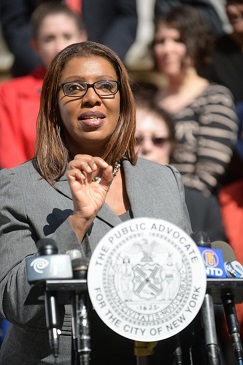One of my first assignments when I started my fellowship almost a year ago was attend a meeting of the Lunch 4 Learning campaign. Still in its infancy back then, one of the departing GHC fellows at Single Stop literally handed me a folder and said “We’ve done some of the background research for this. I think it would be a good project for you to take on.” I was overwhelmed, then, only on my second day and already being told to go to an external meeting about a project I knew nothing about.
As it turns out, staffing Single Stop on Lunch 4 Learning was one of the best parts of my job this year. The L4L campaign is a coalition of organizations and policymakers across multiple sectors working towards one goal: implementing universal, free school lunch for all New York City public school students. We all know how critical nutrition is to educational success, and we all know the negative impacts poverty can have on long-term livelihoods. We know how both tie directly to positive health outcomes. But for New York especially, consider the following:
- The New York City Department of Education oversees 1.1 million public school students. This makes NYC the second-largest institutional food purchaser in the United States after the military.
- 75% of NYC public school students are eligible for free or reduced-price lunch, meaning that their annual family income is less than $36,000 for a family of three. Three-fourths of NYC public school students come from families not even earning twice the federal poverty level.
- The remaining 25% of students are completely ineligible for any kind of assistance, even if their families only make $36,001 a year. Many of these families are still struggling to put food on their tables.
So we’ve got a city department already equipped to prepare massive amounts of food on a daily basis, a disproportionately high number of students who qualify to eat lunch for reduced price or even free, and a system that forces kids to declare in front of their peers that their families are low-income. Unsurprisingly, the rates of students eating school lunch drop as students get older, and the stigma of poverty becomes even more powerful.
Enter Lunch 4 Learning.
The campaign recognized the link between the stigma of poverty, eating school lunch, and health and education outcomes. Given how many students already qualified for free or reduced price lunch anyway, making it free for everyone was the next logical step. And campaign calculations that accounted for maximizing federal reimbursements meant that NYC would essentially gain money by making lunch free and universal.
It should have been an easy win, right? Federal funding is actually designed to help school districts maximize the money they get for implementing universal school lunch, and then-candidate for mayor, Bill de Blasio, made the income inequality and poverty in NYC central issues of his campaign. When he was elected, Mayor de Blasio kept schools and antipoverty initiatives at the forefront of his administrative priorities.
Still, it took time. Time, and a carefully executed campaign strategy that attacked the issue on multiple fronts: on-the-ground organizing, targeted advocacy to policymakers, press conferences, media pieces, and more. NYC Public Advocate Letitia James was an early and vocal supporter of the campaign. By the time the Mayor and City Council were negotiating the fiscal year 2015 budget, universal free school lunch had become one of Council Speaker Melissa Mark-Viverito’s top funding priorities. Hers, as well as about 50 other City Council Members. Mayor de Blasio supported the idea in theory, but wasn’t convinced it was viable yet.

In the end, after a year of campaign strategy, outreach, communications, organizing, and sheer determination, the FY 2015 budget was passed with full implementation in all middle schools in New York City. It isn’t everything we wanted, but it’s an important first step.
Middle schools are when participation in the school lunch program begins to fall off, falling to 61% from 81% in elementary school. It’s the age at which stigma and peer pressure become inescapable parts of the school experience. It also happens to be a time of intense physical changes, making proper nutrition and regular eating habits absolutely essential to promoting long-term health. Implementing universal free lunches in all NYC public middle schools for the 2014-15 school year is going to a challenge, certainly, but the payoff for the City will be felt for years, decades, in the health and well-being of this new cohort of students.
So the Lunch 4 Learning campaign’s work isn’t finished yet. They have to make sure implementation in middle schools this year works, and they’re gearing up to push for a full citywide rollout in the FY 2016 budget. They know how essential good nutrition is to good health, and the campaign won’t be fully won until that nutrition and health are assured for every single student in New York City.
I can’t wait to see what the next year brings.
